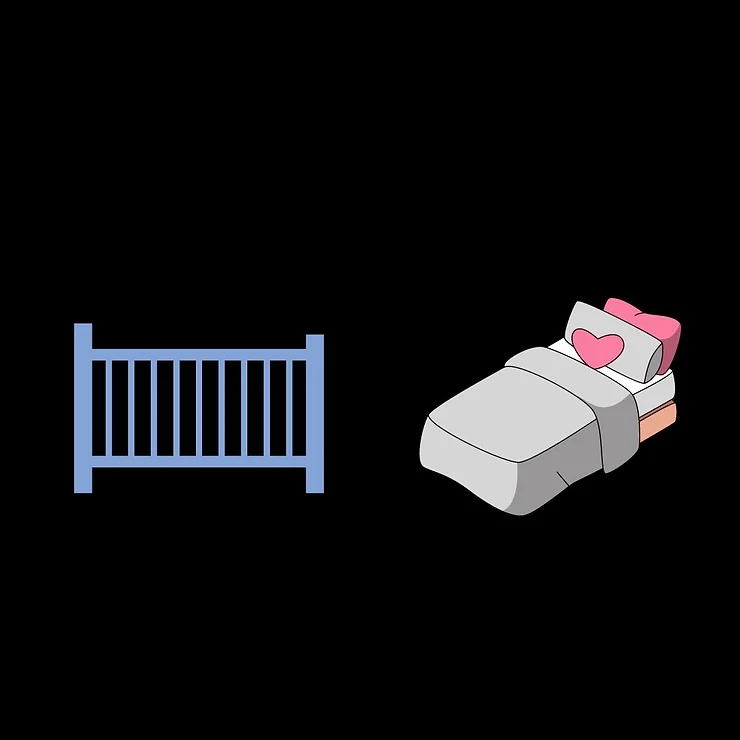Creating Your Child’s Dark Sleep Environment
A fully dark room is often the most significant component in creating a conducive sleep environment. This is for two very important reasons.
The first is that it is the absence of light that facilitates the natural production of melatonin. Melatonin is the hormone that sends a direct message to your child’s brain telling it to “go to sleep!” This is one of the best way to speak directly to your child’s brain and make falling asleep as easy as possible for your child, even if under a new set of conditions.
The second reason for the darkness is simply to make the sleep environment boring! And a boring sleep environment is almost as important as that melatonin production. Our babies and young children are so easily stimulated by the smallest of life’s pleasures, and even a little bit of light streaming across the room can be the difference between a long night and an interrupted one.
While sleeping in a pitch black room is not really necessary for some, it’s one very easy and evidence based way to improve sleep for a baby or child who is either learning independent sleep skills, or could simply use a reset on healthy sleep habits. Many people do not need to have pitch black rooms for sleep all the time, but will always sleep better when it is available.
Some parents are concerned that their children will become very particular sleepers and will have an extra hard time falling asleep under less than ideal environments, such as those offered at most daycares.
The truth is that it’s typical for children, like adults, to always sleep best under ideal sleep conditions. And those who are mostly well rested from enjoying the majority of their sleep under ideal conditions tend to be more adaptable to change compared to those who are not so lucky.
If you have the resources to create a perfectly conducive sleep environment even just some of the time, it will lead to better sleep quality during those times. If that perfect environment can be offered most of the time, it will lead to a well rested child who will be more adaptable to those times when sleep is offered in less than ideal environments like daycare.
Let’s review a few common areas to address when working to improve upon the darkness of your child’s sleep environment.
The Windows:
A little light evening or early morning light shining through those mostly darkened windows is enough for many children to either struggle to fall asleep at bedtime or struggle to fall back to sleep after an early morning wake up. It is often worthwhile to fully black out those windows using whatever means necessary.
I personally love black trash bags secured with painter’s tape because it is fast, effective, inexpensive, and can be as temporary or long term as you desire. Some parents, like myself, might be caught with trash bag decorated windows for a long time simply because it works. Many other parents are going to use this as a temporary method until they are able to choose a more appealing option.
When shopping around for a more appealing long term solution for blacking out the windows in your child’s bedroom, it’s important to consider that what you are considering is truly appropriately sized for your windows. Otherwise, you might end up with very expensive black out blinds, that still allow light to shine through the edges. This is not good enough!
Here are a few other ideas and products for effectively blocking window light:
- 100% double sided blackout curtains with added velcro for the option to secure the contact between the window frame and curtains
- Blackout EZ
- Sleepout curtains
- Velimax cling
The Product Lights:
Have you ever noticed that every product for a baby or young child’s room comes with a bright blue or green light? The exact type of light that can impede the natural production of melatonin, possibly disrupting the signal to your child’s brain telling it to “sleep!”
I recommend taking a small square of duct tape and placing it directly over those lights to help create a more conducive sleep environment. Consider the baby monitor, the sound machine, and the humidifer.
The Hallway Lights:
You might have worked hard to create a truly dark room for your child, and we don’t want the light streaming in through the bottom of the door ruining the positive effects of your labor. Roll up a towel or small blanket to place at the bottom of the door, or consider turning off hallway lights as well if realistic.
A pitch black room goes a long way in improving sleep for babies and young children. In fact, if you’re struggling with sleep as an adult, it’s worth putting some effort into blacking out your own room as well!
Darkness is one important area to address when creating an ideal conducive sleep environment, but there are other areas to consider as well! Read this blog on how to facilitate healthy sleep through a prioritizing a Conducive Sleep Environment.
If you are ready to improve your baby, toddler, or preschooler’s sleep, and you’re ready to do so in the kindest, fastest, and most personalized way, schedule a free 15 minute discovery call to learn about working with me one-on-one!

